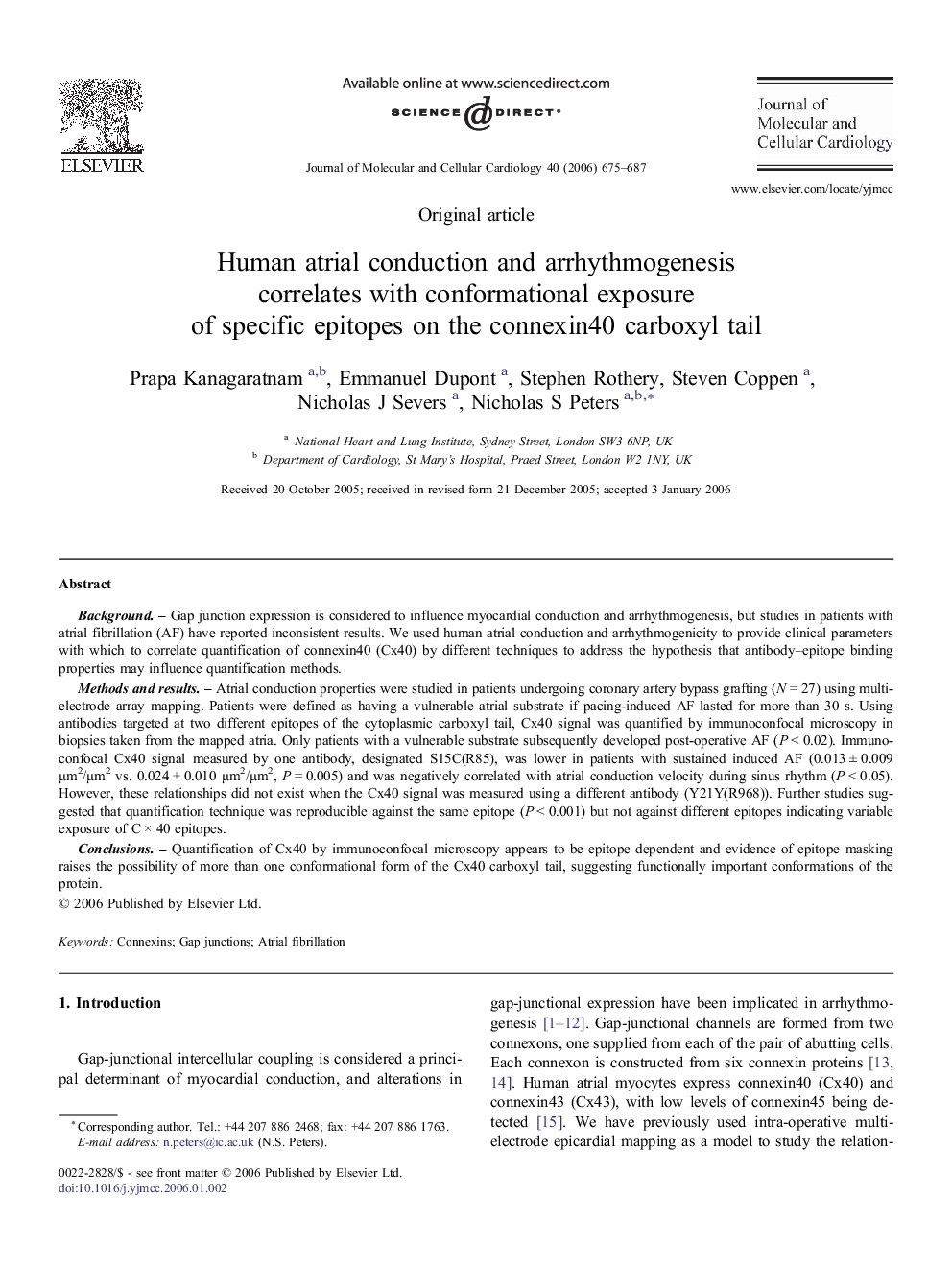| Article ID | Journal | Published Year | Pages | File Type |
|---|---|---|---|---|
| 2192481 | Journal of Molecular and Cellular Cardiology | 2006 | 13 Pages |
Background. – Gap junction expression is considered to influence myocardial conduction and arrhythmogenesis, but studies in patients with atrial fibrillation (AF) have reported inconsistent results. We used human atrial conduction and arrhythmogenicity to provide clinical parameters with which to correlate quantification of connexin40 (Cx40) by different techniques to address the hypothesis that antibody–epitope binding properties may influence quantification methods.Methods and results. – Atrial conduction properties were studied in patients undergoing coronary artery bypass grafting (N = 27) using multi-electrode array mapping. Patients were defined as having a vulnerable atrial substrate if pacing-induced AF lasted for more than 30 s. Using antibodies targeted at two different epitopes of the cytoplasmic carboxyl tail, Cx40 signal was quantified by immunoconfocal microscopy in biopsies taken from the mapped atria. Only patients with a vulnerable substrate subsequently developed post-operative AF (P < 0.02). Immunoconfocal Cx40 signal measured by one antibody, designated S15C(R85), was lower in patients with sustained induced AF (0.013 ± 0.009 μm2/μm2 vs. 0.024 ± 0.010 μm2/μm2, P = 0.005) and was negatively correlated with atrial conduction velocity during sinus rhythm (P < 0.05). However, these relationships did not exist when the Cx40 signal was measured using a different antibody (Y21Y(R968)). Further studies suggested that quantification technique was reproducible against the same epitope (P < 0.001) but not against different epitopes indicating variable exposure of C × 40 epitopes.Conclusions. – Quantification of Cx40 by immunoconfocal microscopy appears to be epitope dependent and evidence of epitope masking raises the possibility of more than one conformational form of the Cx40 carboxyl tail, suggesting functionally important conformations of the protein.
